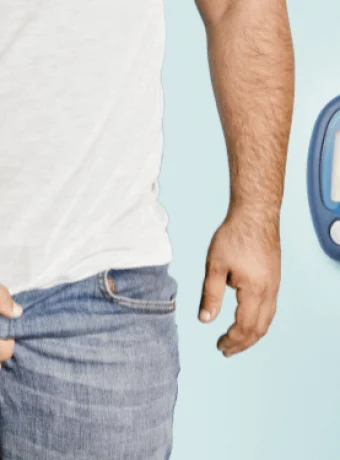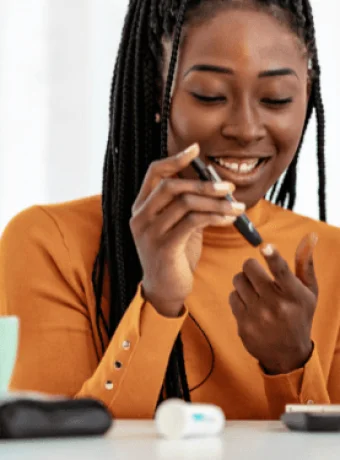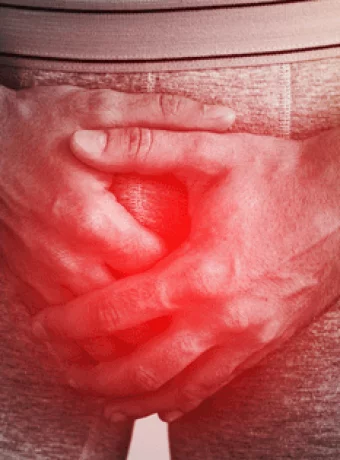7 Diabetes Skin Problems and Warning Signs You Should Know
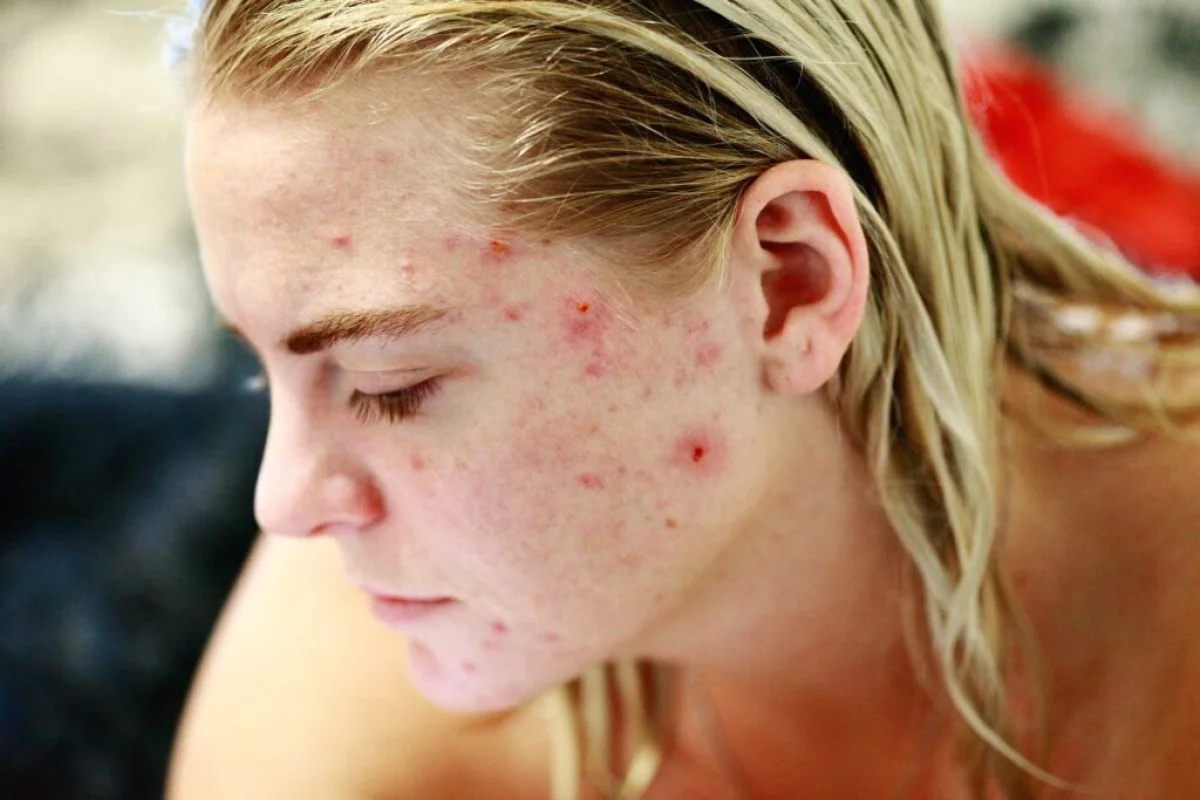
Last Updated on May 10, 2024 by Lauretta Iyamu, PharmD
Diabetes is a disease that can affect anyone irrespective of age, race, and gender. Diabetes is a disease in which your body either can’t produce insulin or effectively use the insulin it produces. In this article, you’ll learn about diabetes and skin conditions: The seven warning signs you need to know.
Insulin is a hormone produced by the pancreas and is required in your body to regulate the amount of glucose in the blood.
Your blood sugar needs to be regulated carefully for your body to function effectively, and high blood sugar can cause damage to your organs, nerves, and blood vessels.
Diabetes can affect several body parts, including your skin resulting in discomforting skin problems. But, amazingly, learning to identify the common signs and symptoms of diabetes skin conditions early can help you clear up the discomfort quickly and regain your health.
When diabetes affects the skin, it’s often a sign that your glucose levels are too high. These warning signs could indicate the following:
- Undiagnosed diabetes or pre-diabetes
- Need to review or adjust your treatment of diabetes.
Diabetes and Skin Conditions
1. Yellow, red, or brown patches on your skin
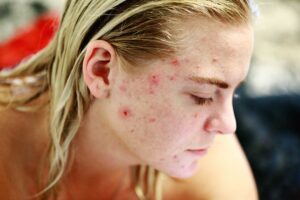
This skin condition is also known as Necrobiosis lipoidica. It presents small, raised, solid bumps that look like pimples. As it progresses, the spots turn into swollen and hard skin patches. The patches can be yellow, reddish, or brown.
You may also notice; A shiny-like appearance around your skin and visible blood vessels, and your skin becomes itchy and painful. This is because the skin disease becomes active, inactive, and then active again.
What you should do
- Get tested for diabetes.
- Get information on how to control your diabetes better.
- Check your skin
2. A dark, velvet-like area on the skin
This condition is known as Acanthosis nigricans.
Acanthosis nigricans occurs when you have too much insulin in your blood. This type of diabetes skin condition may present as a dark patch of velvety skin on the back of your neck, armpit, groin, or other body parts.
What you should do
Get tested for diabetes if you have not tried it before.
3. Hard, thickening skin
This condition is known as digital sclerosis.
It often appears on the fingers, toes, or both. For example, digital sclerosis can cause your fingers to become stiff and difficult to move.
You may see hard, thick, and swollen-looking skin. This can spread and appear on the forearms and upper arms.
It can also spread to your face, shoulder, and chest.
This kind of diabetes skin problem often develops in people with complications due to diabetes and can also occur in people whose diabetes is difficult to treat.
What you should do
- Tell your doctor about the thickening skin you observed.
- Get better control of your diabetes.
- Go for physical therapy to check for joint mobility.
4. Blisters

This condition is referred to as diabetic bullae or diabetic blister. These blisters are present occasionally. However, if you have diabetes, you may suddenly see blisters on your skin.
The blisters can be large, a group of blisters, or both.
Diabetic blisters often appear on the hands, feet, legs, or forearms and present like blisters seen after a severe burn but are painless.
What you should do
- Inform your doctor about the blisters.
- You need to take the necessary steps to prevent an infection.
- Get adequate information on better control of your diabetes.
5. Skin infections

Skin infection is common among people with diabetes. If you have a skin infection, you may present with painful hot, and swollen skin, tiny blisters, itchy rash, dry, scaly skin, or a white patch discharge. A skin infection can occur in any part of your body. For example, in between your toes, your scalp, or around one or more of your nails.
What you should do
- Treat your infection immediately.
- Inform your doctor immediately
- You may need better control of your diabetes to prevent it from spreading.
6. Open sores
This is referred to as diabetic ulcers. They usually occur in the feet. A diabetic ulcer may result from poorly managed diabetes over a prolonged period.
This leads to poor circulation of blood, thus causing nerve damage. Your body finds it hard to heal the wound properly when there is poor circulation and nerve damage.
What you should do
- Get immediate medical care for your wound
- Get better control of your diabetes.
7. Dehydrated itchy skin

Dry, itchy skin is more likely to occur. If you have diabetes, it can be caused when your blood sugar is extremely high.
You may experience dry, itchy skin if you have a skin infection
What you should do
- Inform your doctor about your dehydrated skin.
- Get better control of diabetes to reduce dryness.
- See a dermatologist for help if the symptom persists and causes discomfort.
Conclusion
Visit your doctor if you notice any of the diabetes skin conditions discussed above and any or some of the following signs.
Signs of infection; redness, swelling, pus, and warmth at the site. When infections (bacterial or fungal) are not treated with the right drugs, they worsen and could lead to diabetes complications.
If you also notice a widespread rash that is raised or a red area that is spreading, see your doctor to rule out disseminated granuloma annulare or necrobiosis lipoidica diabeticorum. These are two itchy, rash-like diabetes skin conditions that should be treated with medication. Most diabetic skin conditions can be avoided or improved with proper blood sugar monitoring and good skin hygiene.
References
- Derraik JGB, Rademaker M, Cutfield WS, Pinto TE, Tregurtha S, Faherty A, et al. Effects of age, gender, bmi, and anatomical site on skin thickness in children and adults with diabetes. Brandner JM, editor. PLoS ONE [Internet]. 2014 Jan 21 [cited 2022 Nov 21];9(1):e86637. Available from: https://dx.plos.org/10.1371/journal.pone.0086637
- Dong J, Chen L, Zhang Y, Jayaswal N, Mezghani I, Zhang W, et al. Mast cells in diabetes and diabetic wound healing. Adv Ther [Internet]. 2020 Nov [cited 2022 Nov 21];37(11):4519–37. Available from: https://link.springer.com/10.1007/s12325-020-01499-4
Sharing is caring: Kindly Share This Article…

